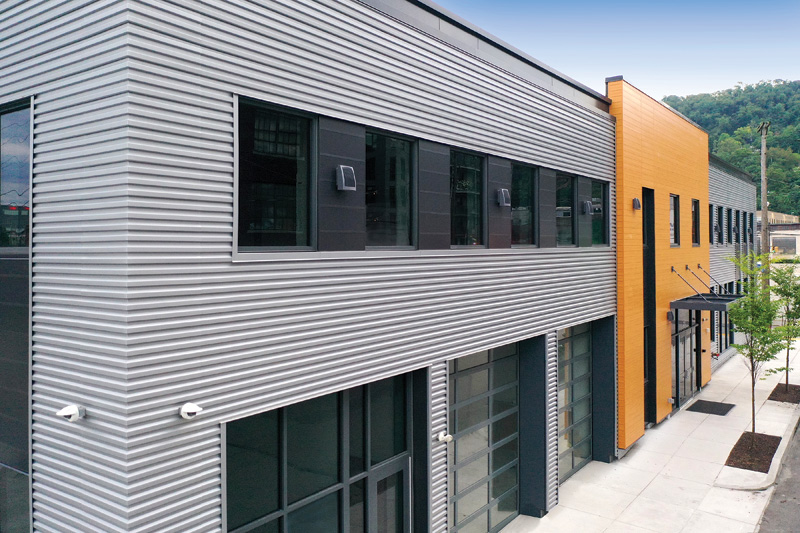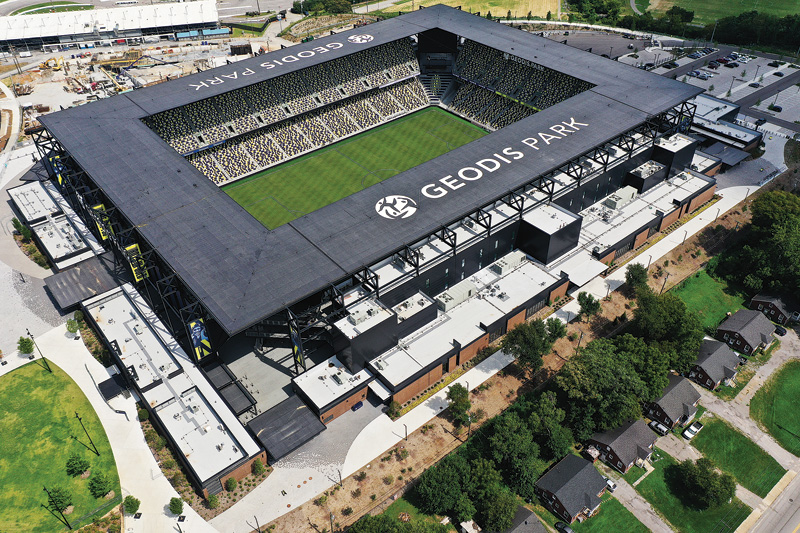Rainscreen vs. Barrier Wall
by tristan_marks | May 28, 2025 1:10 pm

When selecting a cladding system, understanding the differences between rainscreen exteriors and barrier walls is crucial. Both offer unique advantages in performance, system design, and installation, but the decision often hinges on project-specific factors like aesthetic goals, performance needs, budget, and long-term material maintenance.
What is rainscreen cladding?
Rainscreen systems create a dual-layer approach to weather protection. The outer layer is designed to shed rainwater and protect the building from direct exposure, while the backup wall system behind it handles moisture and air infiltration. This approach creates a ventilation gap between the two layers, which allows air to circulate and water to drain, helping prevent moisture buildup and prolonging the building’s lifespan. Since wet insulation loses much of its insulative value, this ventilation feature aids in maintaining energy efficiency by balancing insulation performance and moisture management.

Design flexibility
Rainscreens offer unparalleled flexibility in terms of aesthetics. They accommodate a wide range of materials, including metals (aluminum, zinc, copper), wood, fiber cement, and more. Architects can experiment with various textures, finishes, and colors, creating visually striking and unique facades. This system’s ability to adapt to multiple cladding options makes it ideal for buildings that need to make an architectural statement, such as cultural landmarks, commercial spaces, and universities.
Performance benefits
Aside from aesthetic versatility, rainscreen systems enhance the building’s performance by allowing for improved thermal regulation. The ventilated gap between the cladding and the backup wall can reduce heat transfer, resulting in better energy efficiency. Additionally, rainscreens protect the backup wall system from prolonged exposure to moisture, reducing the risk of water damage and improving the building’s overall durability.

Installation considerations
The complexity of rainscreen systems requires meticulous planning and coordination across trades. Multiple components must be properly aligned to ensure optimum performance, including cladding, waterproofing layers, insulation, and air gaps. Installation may take longer compared to simpler systems like barrier walls, but the benefits in terms of aesthetics and performance can outweigh the added complexity for many projects.
What are barrier walls?
Barrier walls, by contrast, rely on a single-plane system for weatherproofing. They block water, air, and vapor infiltration using a streamlined design, offering straightforward protection against the elements. While they provide effective moisture resistance, barrier walls depend on proper installation to avoid potential breaches.
Simplicity and cost-effectiveness
Barrier walls are a simpler solution and tend to have lower upfront costs due to their reduced complexity. Fewer materials and components are needed, and they often involve fewer trades, resulting in quicker installations. These qualities make barrier walls an attractive option for projects focused on budget and timeline, with performance that meets standard weatherproofing needs.
Making the right choice
When selecting between barrier wall systems and rainscreens, it is important to assess the specific requirements of the project. Barrier walls, including those using insulated metal panels (IMPs), provide a streamlined solution with reliable air, water, and thermal protection. These systems are known for their simplicity and cost-effectiveness, making them well-suited for projects where installation speed and budget control are key considerations.
Rainscreen systems, meanwhile, offer unmatched design flexibility. Their ability to accommodate a wide range of materials—from metal to wood to fiber cement—makes them an attractive option for projects that prioritize architectural creativity and distinct visual appeal. While rainscreens may involve a more complex installation process, they deliver exceptional versatility and aesthetic impact, making them ideal for buildings that aim to stand out.
Ultimately, the choice between these two systems depends on your project’s specific priorities, whether it is ease of installation and budget control or design expression and material variety. Both options offer unique advantages, and consulting with a knowledgeable manufacturer can help determine the most suitable system for a project’s specific goals.
Andrew Ashton, CSI, is Centria’s business development manager. Over the past decade, he has specialized in various areas of the rainscreen and building enclosure industry. He has assisted in the design and development of several innovative rainscreen assemblies, trained dozens of installers on how to handle, fabricate, and install various types of rainscreen materials, and provided hundreds of hours of continuing education AIA courses built around building science and rainscreen concepts.
Source URL: https://www.metalarchitecture.com/articles/features/rainscreen-vs-barrier-wall/